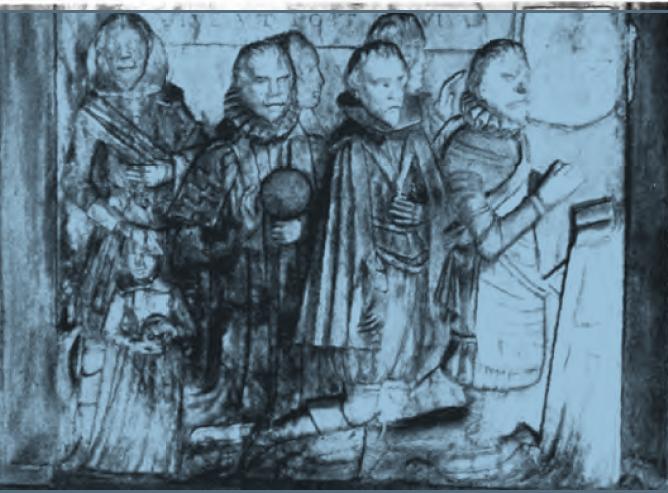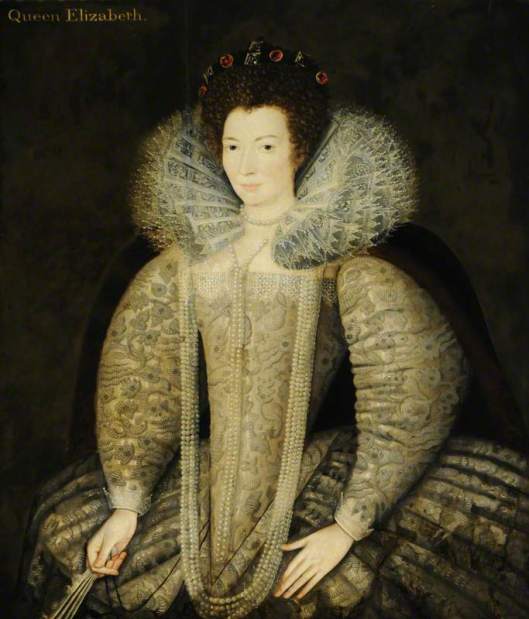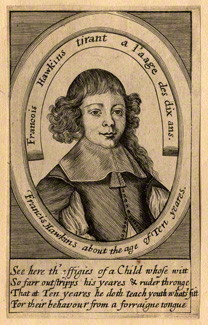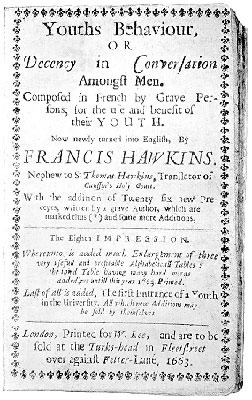John Hawkins was the fourth son of Sir Thomas Hawkins the elder of Boughton under Blean, though his actual date of birth is unknown. As I noted in the previous post, John is said to have studied for his medical degree at Padua in Italy, almost certainly to avoid taking the oath of allegiance and supremacy. A database of London physicians of the period states that he had studied abroad for a period of seven or eight years, and on his return was told that he must be incorporated in a domestic university.
In 1915 the last number of the Eagle, the magazine of St John’s College, Cambridge, reproduced this letter of 1616 from the college’s benefactor, Mary, Countess of Shrewsbury:
To my very loving friend, Mr. Doctor Gwyn, Master of St. John’s College in Cambridge and Vice-Chancellor of that University
Good Mr. Doctor, —I have been earnestly moved in the behalf of this gentleman, Mr. Doctor Hawkins, to become a means unto you that where(as) he hath taken the degree of Doctor of Physic at Padua he may be received into the same degree in your university. For the which I earnestly pray you to do him what lawful favour you may, it being a thing (as I am informed) usually granted to men of his merit that sue for the same. And I shall acknowledge your kindness herein as opportunity may serve. And so with my hearty commendations will commit you to the protection of God.
At Broad Street this 18th of January, 1615 [1616 by today’s reckoning].—Your assured friend,
MA. SHREWSBURY
Mary Cavendish, Countess of Shrewsbury (1556 – 1632), had converted to Catholicism as an adult. She was imprisoned for a time in the Tower of London, as a consequence of helping her niece Lady Arbella Stuart elope to the Continent.
John Hawkins married Frances Power, daughter of Francis Power or Poure of Bletchingdon, Oxfordshire, some time before 1628. Frances Power’s sister Margaret, who married Edward Ewer, was known to be Catholic. John’s father-in-law is almost certainly the Francis Poure who made his will in 1619, from which we discover that his wife Anne was the sister of Sir John Ferrers of Bayford, Hertfordshire, a Gentleman of the Privy Chamber. Francis Poure’s will bequeaths money to ‘my two younger daughters Mary and Anne’, but there is no mention of Frances, perhaps because she had already received a marriage settlement, which would mean that Frances married John Hawkins before 1619.
Francis Poure or Power died a few years before the birth of his grandson Francis Hawkins, which occurred in 1628. According to one source, John and Frances Hawkins may also have had another son, ‘from whom descend the family of Hawkins of Tredunnock, Monmouthshire.’
John Hawkins was known to be a staunch Catholic, and he appears in John Gee’s* list of ‘Popish Physicians in and about the City of London’ in 1624, as residing in Charterhouse Court, Smithfield. Contemporary records inform us that in 1626 Hawkins was required to pay an annual fine of £4, presumably on account of his recusancy.
As well as practicing as a physician, John Hawkins was also well-known as a grammarian and translator. His published works include the following:
‘A brief Introduction to Syntax, collected out of Nebrissa. … With the Concordance supplyed by J. H.,’ London, 1631
‘Discursus de Melancholia Hypochondriaca,’ Heidelberg, 1633
‘The Ransome of Time being captive. Wherein is declared how precious a thing is Time,’ London, 1634, written in Spanish by Andreas de Soto, and translated by J. H.
‘Particulæ Latinæ Orationis, collectæ, dispositæ, et confabulationibus digestæ,’ London, 1635
‘Paraphrase upon the seaven Penitential Psalms,’ London, 1635, translated from the Italian by J. H.
The date of John Hawkins’ death is unknown and I’ve been unable to locate his will. However, one source suggests that he practised medicine between 1616 and 1638, and as stated above, he published nothing after 1635. This would fit with the fact of his absence from the 1640 will of his brother Sir Thomas Hawkins the younger. (However, see the next paragraph, which suggests that John might still have been alive in 1641.)
John Hawkins’ son Francis was a child prodigy who translated the French advice book ‘Youth’s Behaviour’ before he was eight years old. The translation was first printed in 1641, at his father’s request, by the publisher William Lee. The second edition of 1646 bears the following inscription:
‘Youth’s Behaviour, or Decency in Conversation amongst Men’ Composed in French by grave persons, for the use and benefit of their youth. Now newly turned into English by Francis Hawkins.’
The edition of 1654 contains an engraved portrait of the boy (see above), inscribed ‘François Hawkins tirant a l’aage d’huict ans,’ with four lines of English verse on his precocity. In his address to the reader the publisher apologises for ‘the Style … wrought by an uncouth and rough File of one in greene yeares.’ A fourth edition appeared in 1650, others in 1652, 1653, 1654, and 1663, and a ninth edition in 1668. A second part, entitled ‘Youth’s Behaviour; or Decency in Conversation amongst Women,’ was produced in London in 1664, with a portrait of Lady Ferrers, presumably Francis’ maternal grandmother, by the Puritan bookseller Robert Codrington. Francis is also known for a second work, ‘An Alarum for Ladyes’, translated from de La Serre, which he published at the age of ten.
In 1649, at the age of 21, Francis Hawkins left England to join the Society of Jesus and was professed of the four vows on 14th May 1662. In 1665 he was socius (a kind of secretary or chief of staff) to the master of novices at Watten; in 1672 he was confessor at Ghent; and in 1675 he became Professor of Holy Scripture at Liège College. Unlike his uncle and fellow Jesuit Henry Hawkins, Francis did not join the English mission but served in mainly administrative roles in various Jesuit colleges on the Continent. Francis Hawkins died at Liege on 19th February 1681.
*A personal footnote
The anti-Catholic writer John Gee, compiler of the list of ‘popish physicians’ in which John Hawkins’ name appears, had a brother Orlando who was Registrar to the Court of Admiralty, in which capacity he was one of the signatories to the certificate admitting my 7 x great grandfather, the goldsmith Joseph Greene, to the freedom of the City of London, in 1693.



